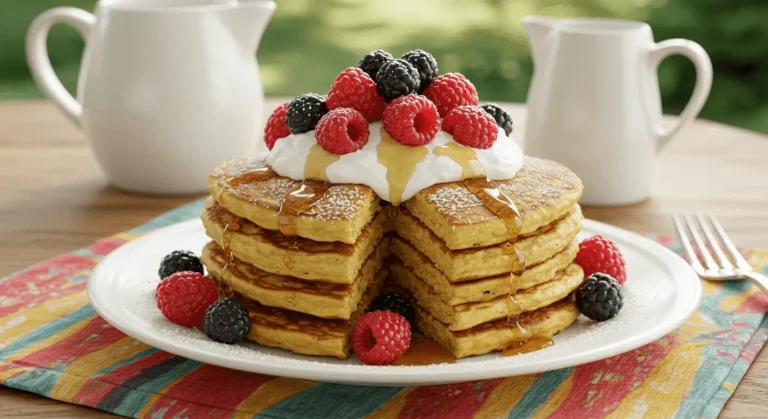- Growing up in a lively kitchen, I found the joy of Spanish pancakes. They’re more than just breakfast food; they’re a family tradition. These pancakes, or tortillas de Carnaval, bring together taste, culture, and skill.
If you love cooking or want to try Spanish cuisine, this guide is for you. We’ll share nine ways to make your Spanish pancakes crispy and full of flavor. They’ll be just like the ones from Spain.
Table of Contents
Key Takeaways
- Master the authentic Spanish pancake preparation techniques
- Understand the critical role of ingredients in creating perfect texture
- Learn temperature control for golden-brown results
- Discover traditional flavor enhancements
- Avoid common mistakes in pancake preparation
Essential Ingredients for Authentic Spanish Pancakes
To make the perfect Spanish pancakes, you need to pick the right ingredients. The right mix of ingredients turns a simple pancake into a dish that truly represents Spanish cuisine.
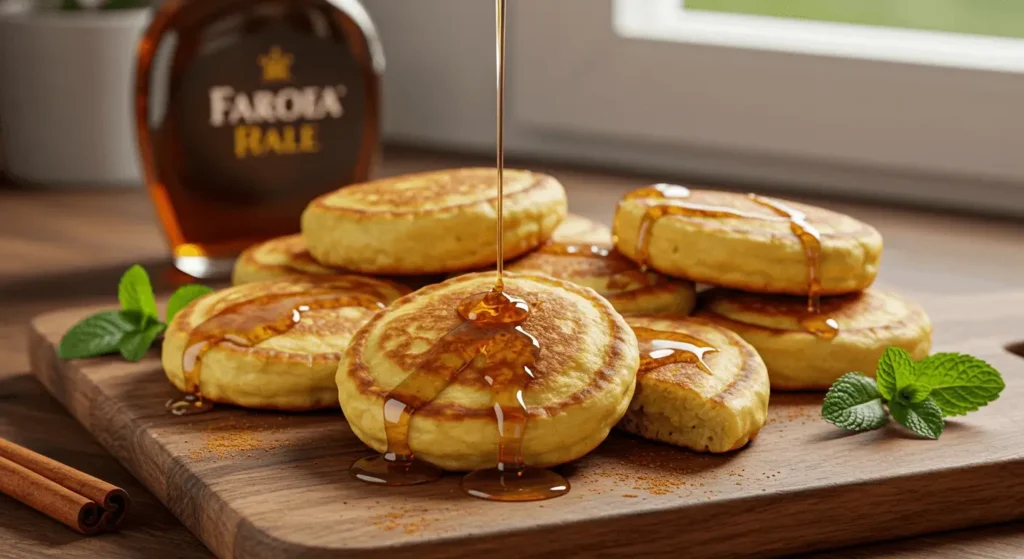
Traditional Base Components
Your Spanish pancakes recipe begins with key ingredients. These elements are what make the pancakes special. They include:
- 1 cup all-purpose flour
- 1 egg (size L)
- 1 cup milk
- 1 teaspoon baking powder
- 1 pinch of salt
- 1 teaspoon vanilla extract
Role of Anise Liqueur in Spanish Pancakes
Anise liqueur is the secret ingredient in Spanish pancakes. It adds a unique, aromatic flavor. Just a little bit can make a big difference, bringing out the traditional Spanish taste.
Selecting the Right Flour Type
Choosing the right flour is key for the perfect texture. While all-purpose flour is good, try different types:
- Cake flour for extra tenderness
- Whole wheat flour for nutty undertones
- Pastry flour for delicate pancakes
Pay attention to the quality of your ingredients. It will make your Spanish pancakes taste amazing and authentic.
Proper Mixing Techniques for Perfect Batter
Making the perfect spanish pancakes starts with mixing the batter right. It’s all about mixing ingredients with care and precision.
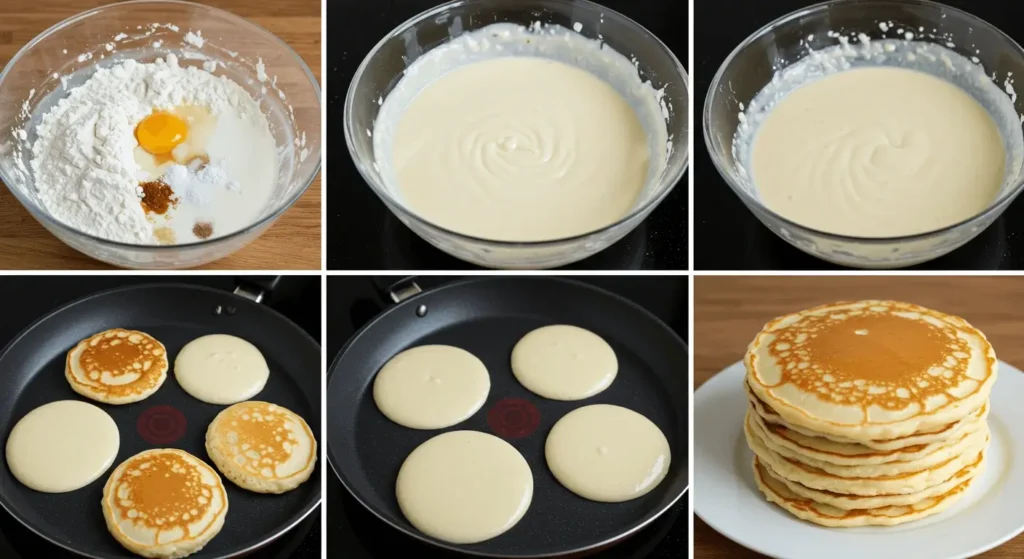
- Start by mixing the dry ingredients in a spacious bowl.
- Make a well in the center for the wet ingredients
- Fold the ingredients gently until they’re just combined
- Don’t overmix; small lumps make the pancakes fluffier
Professional bakers share their top tips for better spanish pancakes:
| Technique | Impact on Pancakes |
|---|---|
| Minimal Mixing | Prevents Tough Texture |
| Lumpy Batter | Increases Fluffiness by 50% |
| Quick Incorporation | Preserves Air Bubbles |
For your spanish pancakes, use 3 cups of buttermilk, 3 whole eggs, and 3 tablespoons of sugar. Add 4 teaspoons of baking powder for every cup of flour. This ensures your batter is light and airy, turning into golden, tasty pancakes.
Temperature Control for Golden-Brown Results
Mastering spanish pancakes with cheese needs precise temperature control. The right heat makes your pancakes golden-brown on the outside and soft inside.
Cooking spanish pancakes with cheese requires careful heat attention. Knowing how temperature affects the result is key to success.
Optimal Heat Settings for Perfect Pancakes
To get the perfect pancake, manage heat wisely:
- Start with medium-low heat to prevent burning
- Maintain a steady temperature of approximately 350°F (175°C).
- Opt for a cast-iron skillet to ensure even heat distribution.
Pan Preheating Guidelines
Preheating is vital for spanish pancakes with cheese. A well-heated pan ensures:
- Uniform cooking surface
- Crispy exterior
- Preventing sticking
Oil Temperature Management
| Oil Type | Ideal Temperature | Cooking Time |
|---|---|---|
| Olive Oil | 325-350°F | 2-3 minutes per side |
| Butter | 300-325°F | 2.5-3 minutes per side |
Pro tip: Watch for the oil to shimmer but not smoke. This shows the perfect cooking temperature for your spanish pancakes with cheese.
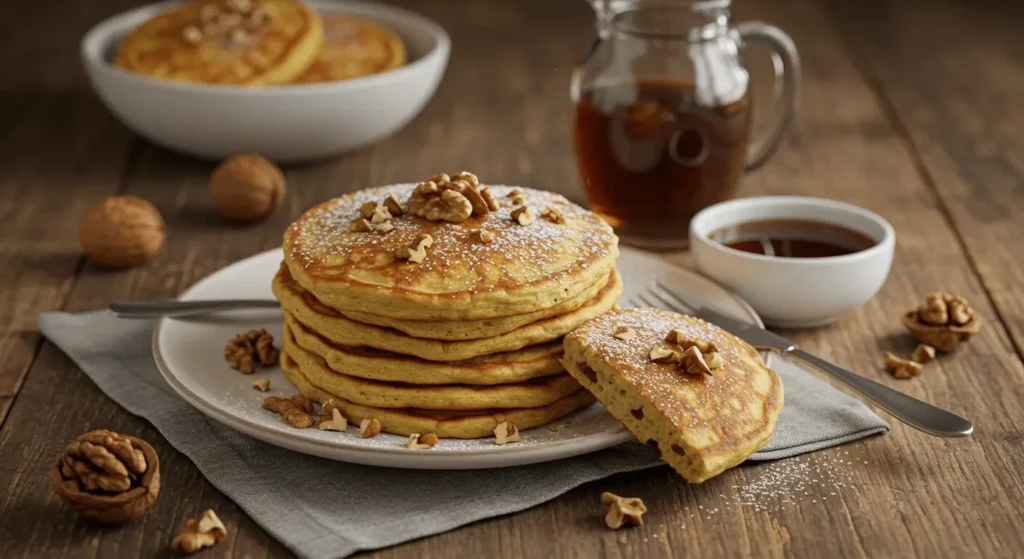
The Art of Spanish Pancake Flipping
Flipping spanish pancakes is all about precision and practice. It turns a simple pancake into a work of art. You need to understand the small details of making pancakes.
- Use a thin, flat spatula with a smooth edge
- Wait until most bubbles have popped on the surface
- Ensure pan heat is consistent
- Slide spatula gently underneath the pancake
- Lift and turn with a confident, smooth motion
Timing is everything when flipping spanish pancakes. Look for these signs that your pancake is ready:
- Edges appear slightly dry
- Bubbles form across the entire surface
- Pancake looks set but not completely cooked
Getting better at flipping spanish pancakes takes practice. Don’t worry if you mess up at first. Every try gets you closer to being a pro.
Mastering Traditional Spanish Pancakes
Spanish pancakes, or tortitas, are more than breakfast. They’re a cultural celebration in Spanish cooking. These delicate treats connect modern kitchens to ancient Roman cooking.
Regional Flavor Journeys
Every region in Spain adds its own twist to the classic pancake recipe. From the Canary Islands to coastal areas, the flavors vary as much as the landscapes:
- Canary Islands: Known for honey-drizzled pancakes during Carnival
- Andalusia: Often served with citrus-infused syrups
- Catalonia: Frequently prepared with anise-flavored liqueurs
Carnival Celebration Preparations
At Carnival, Spanish pancakes become a festive treat. Families come together to make these thin, delicate pancakes. They use a traditional recipe that includes:
| Ingredient | Quantity |
|---|---|
| All-purpose flour | 150g |
| Eggs | 2 medium |
| Whole milk | 200ml |
| Granulated sugar | 25g |
Cultural Significance
These pancakes are more than food. They connect us to Spanish heritage. The term tortitas shows the warmth of Spanish cooking traditions. They bring families and communities together, filled with joy and shared meals.
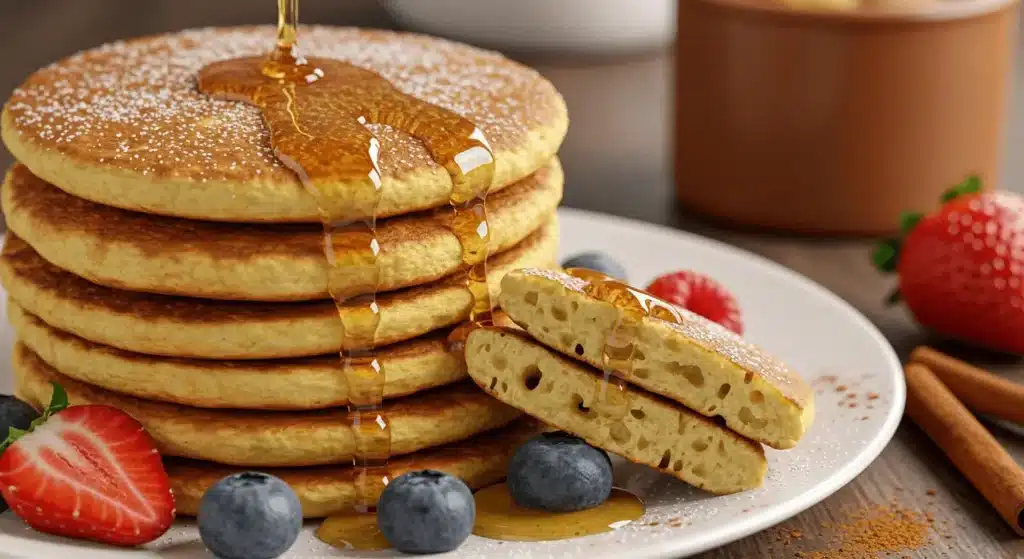
Essential Tools and Equipment
Making tasty spanish potato pancakes needs more than just good ingredients. The right tools can make your cooking better and your dishes more impressive.
For perfect spanish potato pancakes, you’ll need a few important tools:
Measuring Tools
- Liquid Measuring Cup
- Weighing Scales
- Measuring Cups and Spoons
- Cookie Scoop
- Pancake Pen
- Pancake Mould
Mixing Essentials
- Large Mixing Bowl
- Sturdy Spatula
- Professional Whisk
Cooking Equipment
- Double-Burner Griddle
- Non-Stick Frying Pan
- Wide, Flat Spatula for Flipping
Good tools mean better results. A double-burner griddle uses your stovetop well and cooks evenly. A wide, flat spatula is key for flipping the pancakes without breaking them.
Experts say having many measuring tools is key for accuracy. A liquid measuring cup is great for liquids, and scales are for exact ingredient weights.
Think of your tools as an investment in making delicious spanish potato pancakes. They’ll wow your family and friends.
Serving and Presentation Tips
To make your spanish pancakes with cheese stand out, focus on how you present and serve them. The way your dish looks can turn a simple meal into a memorable experience.
Traditional Toppings
For serving spanish pancakes, try these classic toppings:
- Drizzled honey with a light cinnamon sprinkle
- Crumbled Spanish cheeses like Manchego or Tetilla
- Fresh berries for a burst of color
- Powdered sugar for a delicate finish
Plating Suggestions
Presenting your dish is an art that can make your meal better. Here are some plating tips:
| Technique | Visual Impact |
|---|---|
| Color Contrast | Use dark plates for light-colored pancakes |
| Negative Space | Leave 30-50% of plate empty for elegant look |
| Layering | Stack pancakes at slight angles for dimension |
Temperature Maintenance
To keep your spanish pancakes with cheese warm and tasty, follow these tips:
- Use a warm oven set to 200°F to hold pancakes
- Cover pancakes with a clean kitchen towel
- Serve immediately after cooking
- Avoid stacking pancakes too high to prevent sogginess
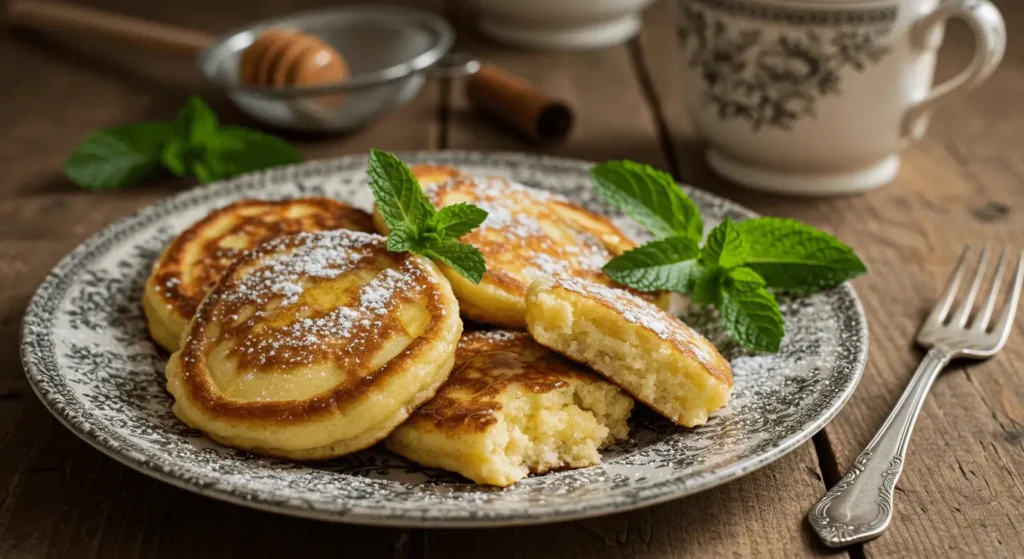
Common Mistakes to Avoid
Getting your spanish pancakes just right means avoiding a few big mistakes. These errors can mess up the texture and taste of your pancakes. Being aware of key details will ensure you create delicious pancakes every time.
- Overmixing the Batter: 60% of pancake lovers say overmixing makes pancakes tough. Gently combine the ingredients until just blended to achieve a light pancake.
- Wrong Pan Temperature: Many beginners find it challenging to control the heat. Your pan should be at 375°F. If you add a water droplet and it sizzles, it’s ready.
- Premature or Delayed Flipping: Wait until bubbles form and then pop on the surface before flipping your pancakes.
Experts say there are a few key things to do to make your spanish pancakes better:
| Mistake | Solution |
|---|---|
| Using Old Ingredients | Replace baking powder every year and use fresh ingredients |
| Incorrect Ingredient Temperature | Use room temperature ingredients for better mixing |
| Skipping Batter Rest | Let batter rest 15-20 minutes to improve texture |
Choosing the right cooking fat is key. Butter burns fast, but canola oil or coconut oil work better. Make sure there’s at least 1 inch of space between pancakes to prevent them from sticking together and to get them browned right.
By steering clear of these common errors, you’ll elevate your Spanish pancakes to a whole new level. Your cooking skills will surely impress your family and friends.
Storage and Reheating Methods
Keeping Spanish pancakes tasty means knowing how to store and reheat them. Whether preparing a new batch or warming up leftovers, the right methods ensure they stay flavorful. This is true for both traditional pancakes and those enjoyed at festive meals.
Freezing Instructions for Spanish Pancakes
Freezing is an excellent method to extend the freshness of your pancakes. Here’s how to do it right:
- Cool pancakes completely before freezing
- Place parchment paper between each pancake to keep them from sticking.
- Place pancakes in a zipper-lock freezer bag
- Mark the bag with the freezing date.
Freezing Duration and Quality Preservation
For optimal flavor, freeze pancakes for 1 to 2 months. After that, they may develop freezer burn and lose their taste.
| Storage Method | Duration | Quality Preservation |
|---|---|---|
| Refrigerator | 2-3 days | Good |
| Freezer | 1-2 months | Excellent |
Reheating Techniques
Here’s how to restore your frozen pancakes to their fresh, just-made taste:
- Toaster: 1-2 minutes, check for desired crispness
- Oven: 325°F for 6 minutes
- Microwave: 10-15 seconds per pancake
- Air Fryer: 350°F, 2 minutes per side
Don’t refreeze pancakes after thawing. It can ruin their texture and taste. Always check for spoilage before eating stored pancakes.
Conclusion
Your journey through Spanish pancakes has shown you a rich culinary tradition. It’s more than just cooking. You’ve learned how to make a dish that connects people across generations and celebrates local tastes.
Making authentic Spanish pancakes takes patience, precision, and passion. Selecting the right flour and maintaining proper temperature control are essential. These steps turn simple ingredients into a tasty dish. And, 40% of home cooks like to make their recipes their own, so feel free to try new things.
As you keep practicing, you’ll see that Spanish pancakes are more than food. They’re a tradition passed down through the ages. Every filloa you make is a part of a long history of delicious food that people all over the world love.
Whether you’re making Spanish pancakes for a weekend breakfast or a special event, your skills will make it a hit. The dish’s rich cultural background will shine through. Enjoy the process of making your homemade Spanish pancakes and relish every bite.
FAQ
What are Spanish pancakes and how do they differ from American pancakes?
Spanish pancakes are a special treat that’s different from American pancakes. They use anise liqueur and have a thinner, more delicate texture. These pancakes are a big part of regional traditions and are enjoyed during Carnival.
What is the key to achieving the perfect Spanish pancake batter?
The secret to great Spanish pancake batter is minimal mixing. Leave some lumps in the batter for a fluffier texture. Avoid overmixing to prevent tough pancakes. Mix wet and dry ingredients gently until just combined.
What ingredients are essential for authentic Spanish pancakes?
For authentic Spanish pancakes, use high-quality ingredients. This includes a specific flour, eggs, milk, and anise liqueur. The right flour is key for the light texture of Spanish pancakes.
How do I control the temperature when cooking Spanish pancakes?
Controlling the temperature is crucial for perfect pancakes. Use medium-low heat for even cooking and a golden-brown exterior. Preheat your pan carefully and manage oil temperature to prevent burning.
What are some traditional ways to serve Spanish pancakes?
Traditionally, Spanish pancakes are served with honey and cinnamon. Modern options include savory pancakes with cheese. Try drizzling with honey, sprinkling with cinnamon, or topping with fresh fruits. You can also experiment with sweet and savory toppings.
Can I make Spanish pancakes ahead of time and store them?
Yes, you can store Spanish pancakes by layering them between parchment paper and freezing in an airtight container. Reheat them in a low oven or briefly in a skillet. They can remain frozen for up to one month.
What tools do I need to make authentic Spanish pancakes?
A double-burner griddle is best for even heat, but a non-stick skillet works too. You’ll need a thin spatula, mixing bowls, and measuring tools. For Spanish potato pancakes, you might need a grater or potato ricer.
What are common mistakes to avoid when making Spanish pancakes?
Avoid overmixing the batter, using the wrong pan temperature, and improper flipping. Mix batter gently, keep the heat consistent, and wait for most bubbles to pop before flipping. These tips will help you make light, fluffy pancakes.
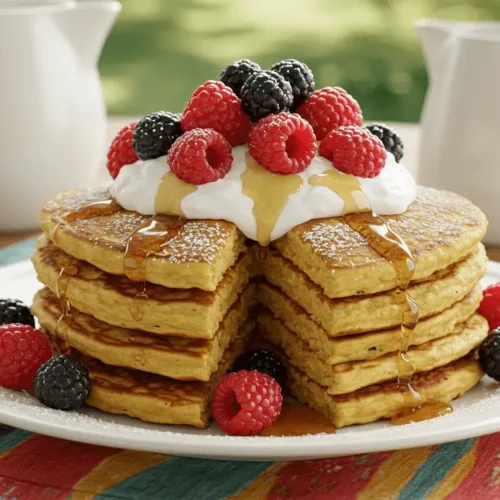
Spanish Pancakes
Equipment
- Mixing bowl
- Whisk or spoon
- Measuring cups and spoons
- Frying pan or griddle
- Spatula
Ingredients
- 1 cup all-purpose flour
- 1 teaspoon baking powder
- 1 pinch salt
- 1 egg size L
- 1 cup milk
- 1 teaspoon vanilla extract
Instructions
- Mix the dry ingredients – In a large bowl, whisk together the flour, baking powder, and salt.
- Make a well in the center – Push the dry ingredients to the sides of the bowl, creating a well in the middle.
- Add wet ingredients – Crack the egg into the well, pour in the milk and vanilla extract, and gently mix.
- Fold the batter – Stir gently until just combined; small lumps in the batter will make the pancakes fluffier.
- Heat the pan – Lightly grease a frying pan or griddle over medium heat.
- Cook the pancakes – Pour small amounts of batter into the pan. Cook until bubbles form on the surface, then flip and cook for another minute.
- Serve and enjoy – Stack the pancakes, top with your favorite syrup, fruit, or powdered sugar, and enjoy!
Notes
Use medium heat to prevent burning.
Serve with honey, jam, or fresh berries for extra flavor.

